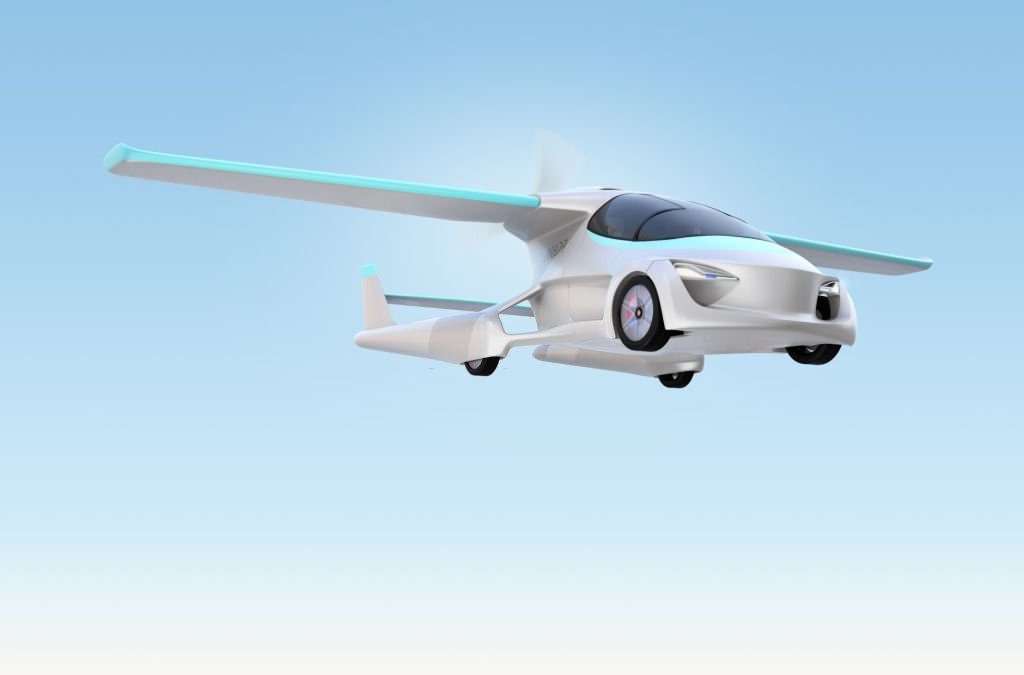The world of transportation is on the brink of a revolutionary transformation with the emergence of flying cars. Long relegated to the realm of science fiction, these aerial vehicles are rapidly progressing from conceptual prototypes to tangible prototypes, bringing us closer to a new era of mobility.
The Future of Transportation: The Promise of Flying Cars
“Flying Cars Stock”, With the advent of flying automobiles, the transportation industry is on the verge of undergoing a dramatic upheaval. These flying vehicles, formerly confined to science fiction, are now fast developing from abstract concepts to actual prototypes, ushering in a new era of mobility.
Flying cars have the ability to transform urban travel, reduce traffic congestion, and improve overall efficiency, therefore the future of transportation is quite bright. The intriguing possibilities of flying cars and their potential influence on our daily lives are explored in this essay.
Advantages of Flying Cars
Flying cars hold several advantages over traditional ground-based transportation. Firstly, they have the potential to bypass congested roads and eliminate traffic jams, allowing for faster and more efficient travel. Moreover, flying cars can navigate direct routes, significantly reducing travel times for both short and long distances. This increased efficiency could have far-reaching implications for business productivity and personal time management.
Safety and Regulations
Ensuring the safety of flying cars is paramount to their successful integration into the transportation landscape. Adequate regulations and air traffic management systems must be developed to manage the increased complexity of a three-dimensional transportation network. This includes considerations such as vehicle certifications, pilot training, airspace regulations, and collision avoidance systems. Collaborative efforts between governments, aviation authorities, and manufacturers are crucial to establish a robust framework that prioritizes safety without stifling innovation.
Socioeconomic Impacts
The introduction of flying cars has the potential to bring about significant socioeconomic changes. It could create new job opportunities in manufacturing, maintenance, software development, and air traffic management. Additionally, the accessibility and convenience of flying cars could democratize air travel, making it available to a wider range of individuals and communities. However, careful attention must be given to ensure equitable access and affordability, preventing flying cars from becoming an exclusive luxury reserved for the privileged few.
Environmental Considerations
While the idea of flying cars may conjure concerns about increased air pollution, advancements in electric and sustainable propulsion technologies offer a solution. Electric flying cars powered by renewable energy sources can significantly reduce carbon emissions compared to traditional combustion engines. Furthermore, with careful management of air traffic and route optimization, flying cars have the potential to mitigate the environmental impact by reducing congestion and overall travel distances.
Urban Commuting and City Infrastructure
The promise of flying cars to revolutionize urban commuting is one of their most important promises. These vehicles can circumvent the restrictions of road networks and offer a new dimension of transportation possibilities thanks to their ability to fly.
They can utilize already-built facilities like helipads, airports, and even vertically integrated landing and takeoff zones in populated regions, which eliminates the requirement for substantial ground-based infrastructure. This prospective reorganization of municipal infrastructure may reduce traffic congestion and provide new opportunities for urban development.
Flying Cars Stock: Investing in the Future of Transportation
For a long time, the idea of flying automobiles captured our attention because it was frequently depicted in science fiction as a futuristic means of transportation. Flying cars are now a possibility because to recent technology developments and rising interest in aerial mobility.
Investors are increasingly seeking for ways to get a piece of the potential growth of flying cars as this burgeoning industry gains traction. In this article, we examine the idea of flying cars stock and talk about the advantages and drawbacks of investing in this fascinating industry.
The Growth Potential of Flying Cars
Investing in flying cars represents an opportunity to be at the forefront of a potentially transformative industry. With advancements in electric propulsion, autonomous technology, and air traffic management systems, the prospects for commercializing flying cars are becoming more feasible. As urban areas face mounting transportation challenges, flying cars offer a unique solution that could revolutionize the way we travel. Investing in this sector allows individuals to be part of a technological shift that could shape the future of transportation.
Long-Term Vision and Market Potential
Investing in flying cars stock requires a long-term vision. While the industry holds immense potential, it is still in its early stages, and the timeline for widespread adoption remains uncertain. Investors should assess the market potential and consider factors such as consumer demand, affordability, and the integration of flying cars into existing transportation systems. A diversified investment approach, including exposure to different segments of the industry, such as manufacturing, technology providers, and infrastructure developers, can help mitigate risks and maximize potential returns.
Industry Players and Startups
Several companies and startups have emerged as key players in the flying cars industry. These companies are investing heavily in research and development, aiming to bring flying cars to the mass market. Some notable examples include established automotive manufacturers venturing into aerial mobility, as well as startups focused solely on developing flying car prototypes. Investors can research and evaluate these companies to identify potential investment opportunities and assess their potential for success in this nascent industry.
Regulatory and Policy Landscape
The regulatory framework surrounding flying cars is still evolving. Investing in this sector requires an understanding of the legal and policy landscape. Investors should stay informed about government initiatives, collaborations with aviation authorities, and regulations related to airspace usage, certification, and safety. Companies that proactively engage with regulators and contribute to the development of responsible regulations may be better positioned for success.
Technological Challenges and Considerations
Investing in flying cars stock comes with its share of technological challenges and considerations. The successful commercialization of flying cars relies on overcoming hurdles such as battery technology advancements, safety regulations, infrastructure development, and air traffic management systems. Investors should carefully evaluate companies’ technological capabilities, partnerships, and their ability to navigate these challenges. It is crucial to assess whether the companies have a solid roadmap for technological development and a realistic timeline for bringing their products to market.

Flying Cars Uber: The Potential for Aerial Ride-sharing
Uber, the global ride sharing platform, revolutionized ground transportation by connecting riders with drivers through a mobile app. As technology continues to advance, Uber is now exploring the realm of aerial mobility with the concept of flying cars. Flying Cars Uber envisions a future where passengers can travel through the skies, bypassing traditional road networks and enjoying faster and more efficient transportation. In this article, we delve into the concept of Flying Cars Uber and discuss the potential impact of aerial ride-sharing on urban mobility.
Advantages of Flying Cars Uber
Flying Cars Uber offers several advantages over traditional ground-based transportation services. Firstly, aerial ride-sharing can alleviate traffic congestion by taking advantage of the three-dimensional airspace. This can result in faster travel times and reduced travel stress for passengers. Additionally, flying cars can access locations that are not easily reachable by road, such as remote areas or islands, expanding transportation options for passengers. Aerial ride-sharing can also provide a more direct and efficient route, potentially reducing fuel consumption and carbon emissions.
Aerial Ride-sharing: The Next Frontier for Uber
Uber’s interest in flying cars stems from its goal to provide innovative and convenient transportation options. Aerial ride-sharing using flying cars presents an opportunity to address the growing challenges of urban congestion, offering faster point-to-point travel and reducing travel times significantly. Uber aims to leverage its ride-hailing platform to seamlessly integrate flying cars into its existing services, providing a multi-modal transportation experience that combines ground and air travel.
Safety and Regulatory Considerations
Safety is paramount in the development of Flying Cars Uber. Uber is working closely with aviation authorities and regulators to establish the necessary safety standards and certifications for flying cars. This includes ensuring the reliability of aircraft, implementing rigorous maintenance protocols, and developing air traffic management systems that can handle the increased complexity of a three-dimensional transportation network. The collaboration between Uber and regulatory bodies is essential to create a safe and secure environment for aerial rides.
Conclusion
Flying cars present solutions for speedier, more effective, and ecologically friendly transit in the future of transportation.
The prospect of flying automobiles is an exciting new development in transportation. Although there are still many obstacles to be overcome, technical breakthroughs and changing laws are bringing the day of flying automobiles closer to reality.
By purchasing flying cars stock, one might potentially profit from the expansion of a game-changing business while participating in the future of transportation. But it’s crucial to approach this industry with a solid awareness of the technological, governmental, and commercial factors. Like with any investment, thorough due diligence, diversification, and a long-term outlook are essential.

